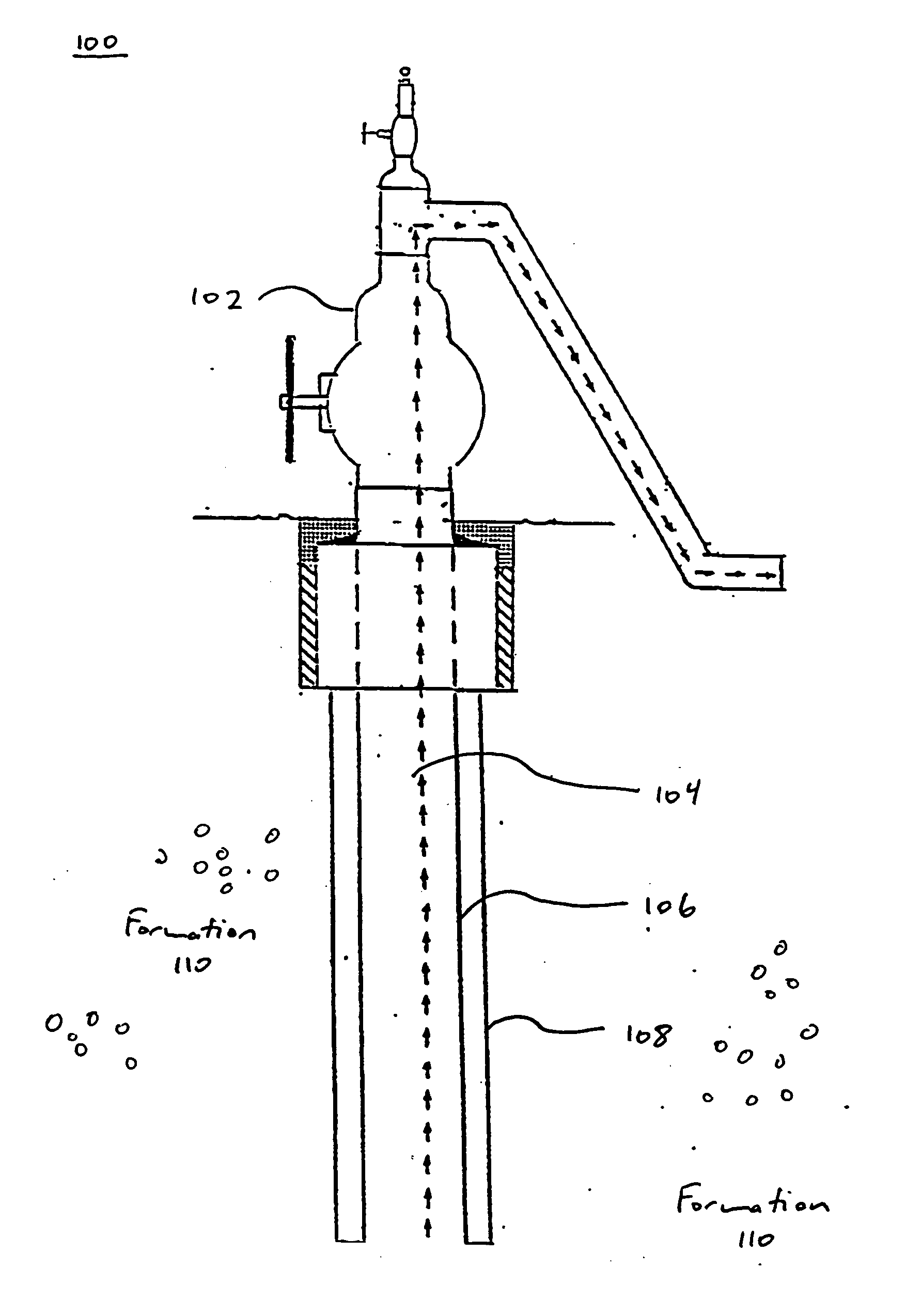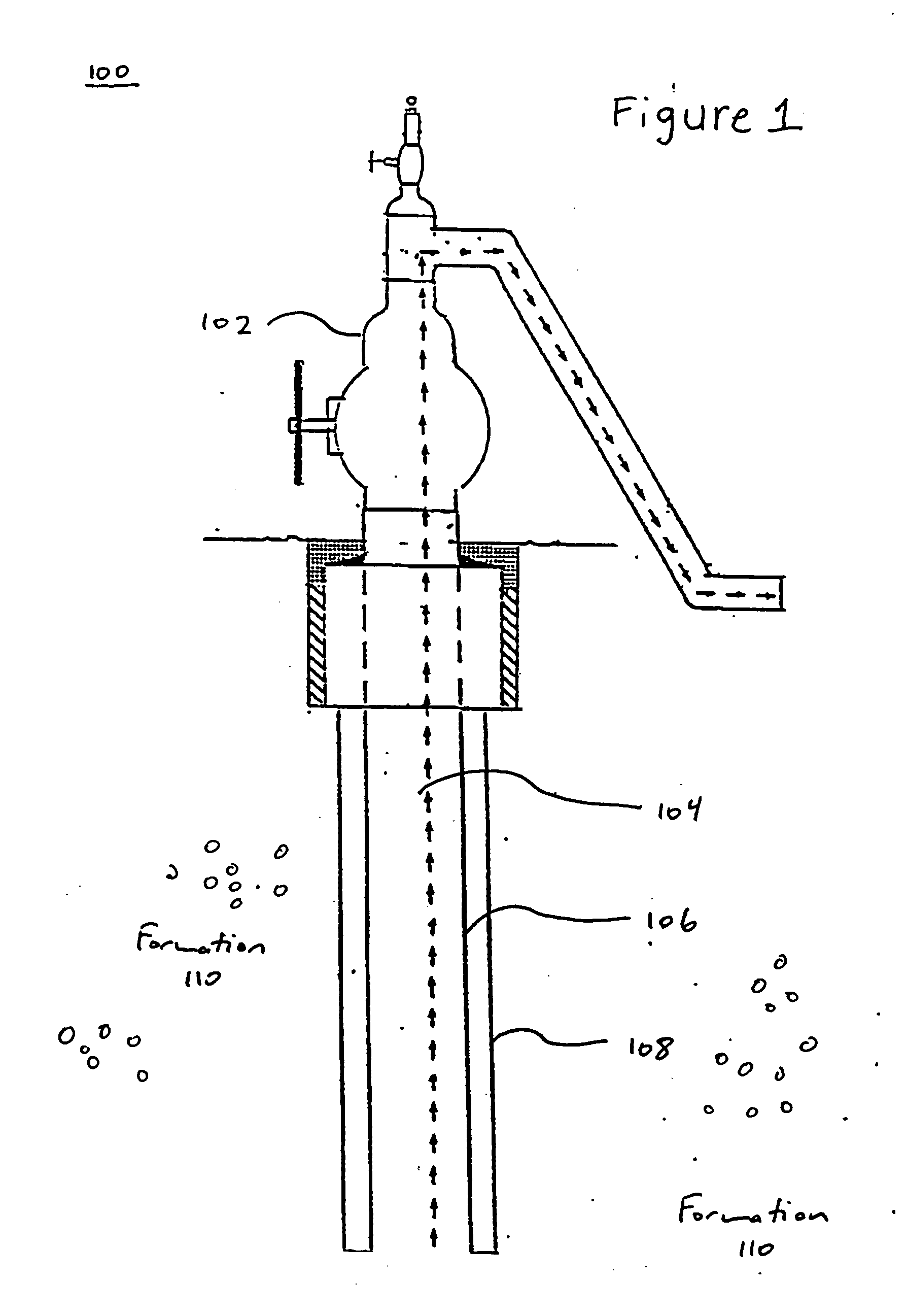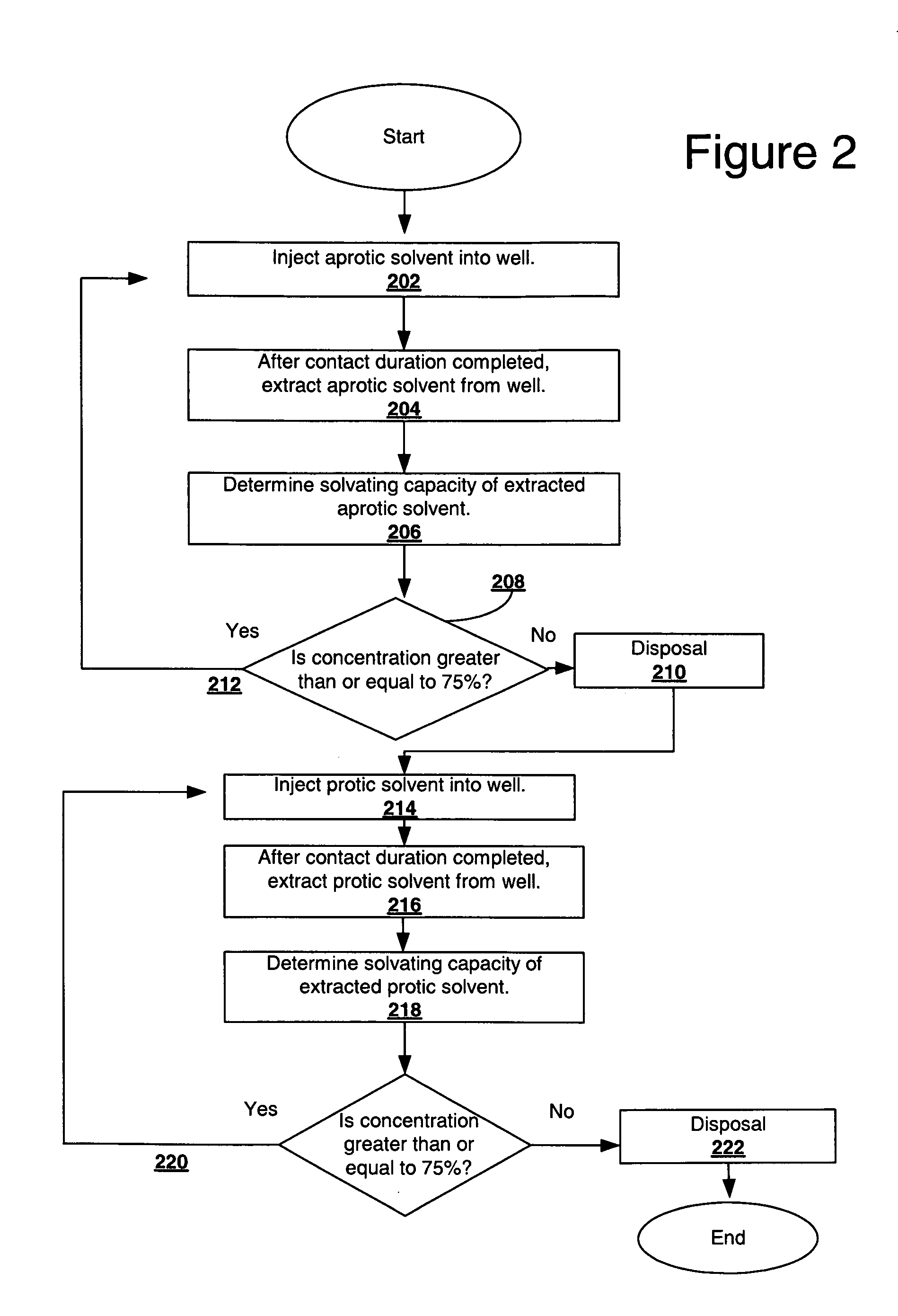Method for enhancing gas well secondary recovery operations
- Summary
- Abstract
- Description
- Claims
- Application Information
AI Technical Summary
Benefits of technology
Problems solved by technology
Method used
Image
Examples
Embodiment Construction
[0023] During the initial phase of the inventive method disclosed herein, several soil and media samples will be taken from the subject well upon which secondary recovery operations will be conducted. The media sample(s) will be analyzed for chemical make up and tested against the solvents used in the inventive process discussed herein to determine solubility and effectiveness. The media samples will also be used to determine the concentration of the solvating chemicals necessary to effectively clean the subject well and formation. The laboratory procedure and analysis employed is well known to those of ordinary skill in the art.
[0024]FIG. 1 is a typical profile representation of a gas well installation with surrounding formation 100. In this depiction, drilling operations have been completed and wellhead 102 has been installed to regulate the flow of natural gas and / or oil out of the formation 110 via well 104. Well 104 is created during drilling operations wherein tubing 106 and ...
PUM
 Login to View More
Login to View More Abstract
Description
Claims
Application Information
 Login to View More
Login to View More - R&D
- Intellectual Property
- Life Sciences
- Materials
- Tech Scout
- Unparalleled Data Quality
- Higher Quality Content
- 60% Fewer Hallucinations
Browse by: Latest US Patents, China's latest patents, Technical Efficacy Thesaurus, Application Domain, Technology Topic, Popular Technical Reports.
© 2025 PatSnap. All rights reserved.Legal|Privacy policy|Modern Slavery Act Transparency Statement|Sitemap|About US| Contact US: help@patsnap.com



